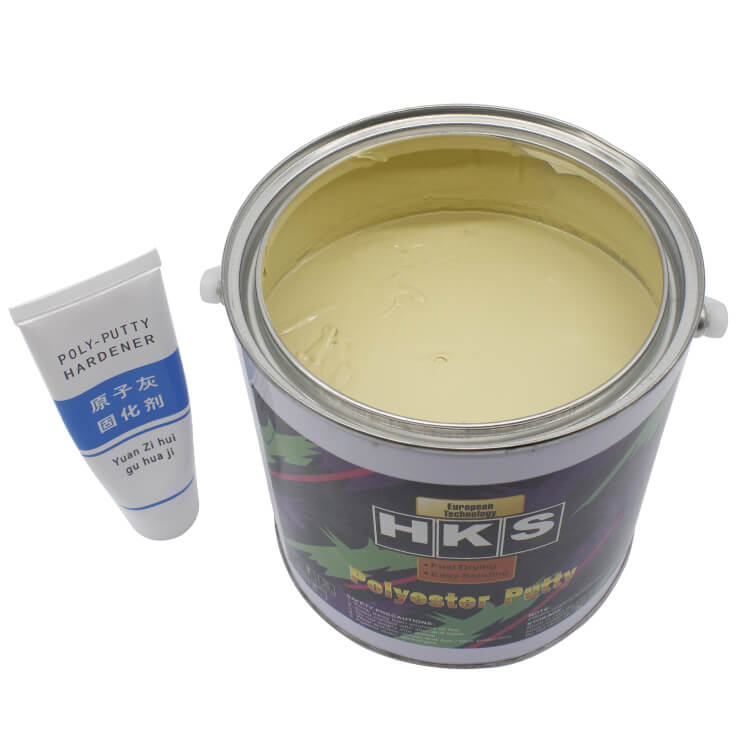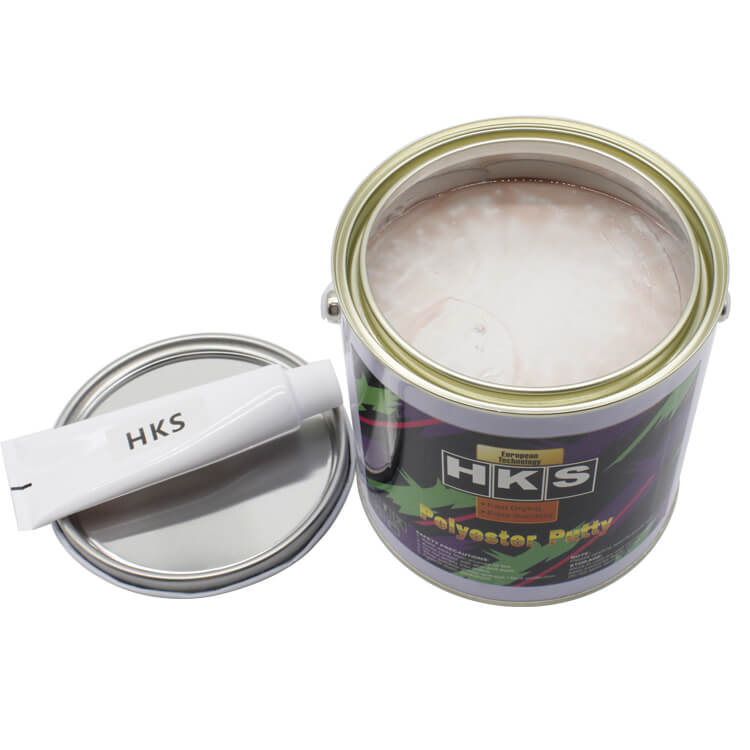Home - Products - Car Body Filler - CHPO Polyester Filler
Car Body Filler Series
Lightweight Body Filler
BPO Polyester Putty
CHPO Polyester Filler
High-Temp Filler
Fiberglass Body Filler
1K Nitrocellulose Putty
1K Primer Surfacer
1K Plastic Primer
2K Intermediate Primer
2K Epoxy Primer
Auto Paint Series
Auto Repair Series
View All Products
CONTACT US
CHPO Polyester Filler
SYBON CHPO Polyester Filler - Perfect Solution for Asian Automotive Market. Introducing the revolutionary CHPO Polyester Filler, exclusively designed and developed by SYBON for the different needs of the Asian automotive market. Our product lineup includes two exceptional variants: Economy CHPO Polyester Putty and Advanced CHPO Polyester Putty, both available in convenient 4KG packaging. SYBON is your trusted partner for achieving flawless automotive finishes with ease.
Product Highlights:
·Good Hiding Power
·Strong Filling Power
·Good Adhesion
·Quick-Drying
·Easy to Sand
Product Variants:
1. Economy CHPO Polyester Putty: Ideal for cost-conscious customers who seek quality without compromise. This variant offers remarkable value while delivering the essential characteristics that make CHPO Polyester Filler exceptional.
2. Advanced CHPO Polyester Putty: For those who demand the pinnacle of performance and perfection, the Advanced variant offers enhanced features for a truly professional finish. Experience superior filling power and an unparalleled finish with this option.
Why Choose SYBON CHPO Polyester Filler:
·Developed for Asian Market: Tailored to meet the specific requirements and standards of the Asian automotive industry, ensuring optimal results in this unique market.
·Expert Craftsmanship: Backed by SYBON's extensive experience in automotive solutions, CHPO Polyester Filler is a testament to our commitment to excellence.
·Quality Assured: Our products undergo rigorous quality control processes, guaranteeing consistency and reliability in every package.
·Innovation and Performance: SYBON continues to innovate, pushing the boundaries of what's possible to provide you with cutting-edge solutions that set new industry standards.
SYBON CHPO Polyester Filler is more than just a product; it's a reflection of our dedication to delivering the best solutions to meet your automotive needs. Experience the difference that precision engineering and quality craftsmanship can make in your projects. Choose SYBON and elevate your automotive finishes to unprecedented heights.
Contact Details
No 4, Chengye Road, Daliang, Shunde, Foshan, Guangdong, China
+86 13682292799
www.supersybon.com
sales@supersybon.com
SOCIAL
Contact Us
Enquiry will send to our sales team, we will reply you with 24 hours.
Need Any Help ?
Order or no-order we are always here to help you
Collaborate with SYBON: Elevate Your Automotive Business
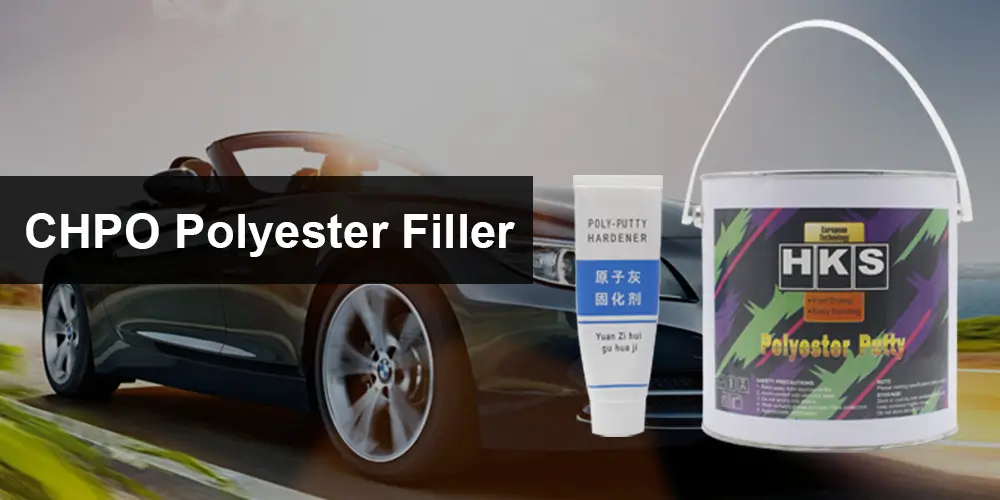
SYBON welcomes import wholesalers, paint store owners, and auto repair shop proprietors to embark on a journey of excellence through two distinct collaboration avenues that cater to your unique business needs:
1. Distributor Partnership: Expanding Horizons, Delivering Quality
Join SYBON as an authorized distributor and introduce our exceptional line of products to your market. As an import wholesaler, paint store owner, or auto repair shop proprietor, this partnership offers you:
Premium Quality: SYBON's products are synonymous with excellence. Distribute our branded CHPO Polyester Filler and provide your customers with automotive solutions that reflect your commitment to top-tier quality.
Diverse Portfolio: Our comprehensive range of CHPO Polyester Filler products, designed for the Asian automotive market, empowers you to meet a wide spectrum of customer requirements.
Comprehensive Support: Benefit from our extensive support network, including training, marketing materials, and technical assistance. We're dedicated to helping you succeed in promoting and selling our products.
2. White Label Partnership: Your Vision, Our Expertise
For those seeking a personalized touch, our white label partnership offers you the chance to have SYBON manufacture CHPO Polyester Filler under your own brand name. By choosing this collaboration, you enjoy:
Tailored Identity: Leverage SYBON's technical expertise to create a product line that embodies your brand's identity and values, while maintaining the superior quality that SYBON is known for.
Effortless Manufacturing: SYBON handles the intricate manufacturing process, ensuring consistent quality, while you focus on branding, marketing, and expanding your product offerings.
Market Distinction: Stand out in a competitive market with a product line that combines your unique vision with SYBON's industry-leading solutions.
SYBON's collaborative opportunities open doors to growth, innovation, and industry excellence. Whether you choose to distribute our branded products or venture into white labeling, SYBON is your committed partner dedicated to enhancing your automotive business. Contact us today to explore how our partnership options align with your aspirations and business goals. Together, we'll drive the future of automotive success.
CONTACT US
Enquiry will send to our sales team, we will reply you with 24 hours.
Your Comprehensive Guide to Polyester Filler Solutions
How to Choose the Best Polyester Filler for Automotive Repairs?
Polyester Filler vs. Traditional Body Filler: Which is Right for You?
A Comprehensive Guide to Using Polyester Filler for DIY Auto Body Repair
Top Tips for Achieving a Seamless Finish with Polyester Body Filler
Step-by-Step Guide to Applying Polyester Filler on Auto Body Panels
Polyester Filler or Bondo: Decoding the Differences and Applications
Polyester Filler Innovations: Exploring the Latest Breakthroughs in Automotive Repair
Polyester Filler vs. Epoxy Putty: Choosing the Right Material for Each Job
Polyester Filler Application Tools: Must-Have Equipment for Professional Results
How to Choose the Best Polyester Filler for Automotive Repairs?
When it comes to automotive repairs, selecting the right materials is crucial to achieving professional and lasting results. Polyester fillers have become a staple in the automotive industry for their versatility, strength, and ease of use. In this guide, we will walk you through the key factors to consider when choosing the best polyester filler for your automotive repair needs.
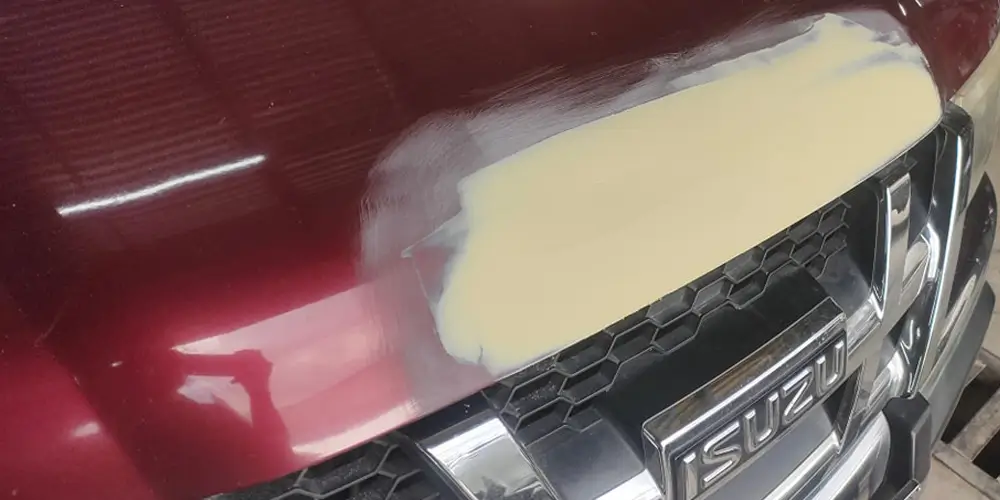
1. Purpose of Repair:
Begin by assessing the extent and purpose of the repair. Are you addressing minor scratches, dents, or more significant bodywork? Understanding the scope of the repair will help you determine the type of polyester filler required.
2. Filler Types:
Polyester fillers come in various formulations, each designed for specific applications. Consider whether you need a lightweight or heavy-duty filler, as well as whether it needs to be used on metal, fiberglass, or plastic surfaces.
3. Adhesion and Compatibility:
Ensure that the polyester filler you choose adheres well to the substrate material. Compatibility is key to prevent future peeling or detachment issues. Some fillers are specifically formulated for certain materials, so be sure to check compatibility before making a decision.
4. Drying Time:
Time is often of the essence in automotive repairs. Quick-drying polyester fillers can significantly speed up the repair process. However, be cautious not to compromise quality for the sake of speed.
5. Sanding and Feathering:
Ease of sanding is a crucial factor in achieving a seamless finish. Opt for a polyester filler that is easy to sand and feather to achieve a smooth surface that seamlessly blends with the rest of the vehicle.
6. Shrinkage and Expansion:
Polyester fillers can undergo shrinkage or expansion during the drying process, which may affect the final result. Look for fillers that minimize these effects to maintain the repaired area's integrity over time.
7. Durability and Longevity:
Consider the filler's durability and longevity. Will it withstand environmental factors, temperature changes, and regular wear and tear? Choosing a high-quality polyester filler ensures that your repairs stand the test of time.
8. Professional vs. DIY Use:
Evaluate whether the filler is suitable for your skill level. Some fillers are more forgiving for DIY enthusiasts, while others may require more expertise to achieve optimal results.
9. Budget Considerations:
While quality is paramount, it's important to consider your budget. Fortunately, there are polyester filler options available at various price points, allowing you to find a balance between quality and affordability.
In conclusion, choosing the best polyester filler for automotive repairs involves a careful consideration of factors such as the repair's purpose, filler types, adhesion, drying time, sanding properties, durability, and your own skill level. By taking these aspects into account and conducting thorough research, you can make an informed decision that will result in a successful and long-lasting automotive repair. Remember, the right choice of polyester filler can make all the difference in achieving a flawless and professional finish.
Polyester Filler vs. Traditional Body Filler: Which is Right for You?
When it comes to auto body repairs, selecting the appropriate filler is a critical decision that can significantly impact the quality and longevity of the results. Two popular options in the automotive repair world are polyester filler and traditional body filler. In this comprehensive guide, we'll delve into the pros and cons of each, helping you make an informed choice for your specific needs.
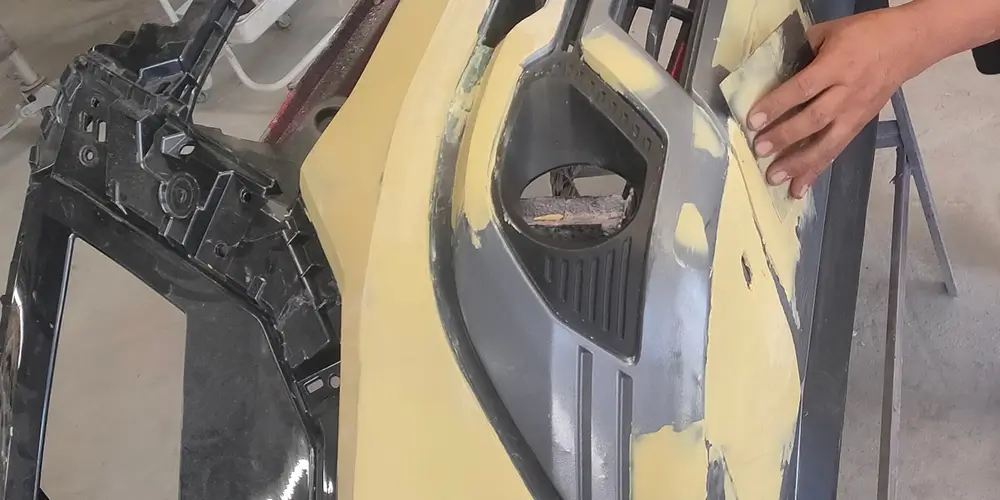
Polyester Filler:
Pros:
Versatility: Polyester filler is highly versatile and can be used on a variety of surfaces, including metal, fiberglass, and plastic.
Quick Drying: Many polyester fillers have quick-drying properties, allowing you to move through the repair process more efficiently.
Easy Sanding: Polyester fillers are generally easy to sand, enabling you to achieve a smooth and even surface effortlessly.
Adhesion: They exhibit good adhesion to various substrates, contributing to the overall durability of the repair.
Cons:
Shrinkage: Polyester fillers may experience some shrinkage during the drying process, potentially requiring additional layers or touch-ups.
Temperature Sensitivity: Extreme temperatures can affect the performance and durability of polyester fillers over time.
Limited Depth: Polyester fillers are best suited for filling shallow dents and surface imperfections, as they may not have the same structural strength as traditional body fillers.
Traditional Body Filler:
Pros:
Structural Integrity: Traditional body fillers offer enhanced structural strength, making them suitable for deeper repairs and areas subjected to more stress.
Longevity: When applied correctly, traditional body fillers can provide lasting and robust repairs, particularly in areas prone to flexing.
Temperature Resistance: Traditional body fillers generally exhibit better resistance to temperature fluctuations and environmental conditions.
Cons:
Sanding Challenges: Traditional body fillers can be more challenging to sand due to their increased hardness, which may require additional effort and time.
Application Complexity: Achieving optimal results with traditional body fillers may require more expertise and skill, making them better suited for experienced professionals.
Curing Time: Traditional body fillers often have longer curing times, which can extend the repair process.
Choosing the Right Option for You:
Selecting between polyester filler and traditional body filler depends on the specific nature of your repair project, your skill level, and your desired outcomes. If you're dealing with surface imperfections, minor dents, or want a quicker repair process, polyester filler could be your choice. On the other hand, if you're facing deeper repairs that require structural integrity and lasting performance, traditional body filler may be the way to go.
In conclusion, the decision between polyester filler and traditional body filler hinges on the complexity of the repair, your skill level, and your priorities. Both options have their strengths and weaknesses, and by carefully assessing your needs, you can make a confident choice that leads to successful and satisfying auto body repairs. Remember, whether you opt for polyester filler or traditional body filler, meticulous application and attention to detail are essential for achieving outstanding results.
A Comprehensive Guide to Using Polyester Filler for DIY Auto Body Repair
Undertaking auto body repairs as a DIY enthusiast can be both rewarding and cost-effective. One crucial tool in your DIY arsenal is polyester filler, a versatile material that can transform your vehicle's appearance. In this comprehensive guide, we'll walk you through the step-by-step process of effectively using polyester filler for your DIY auto body repair projects.
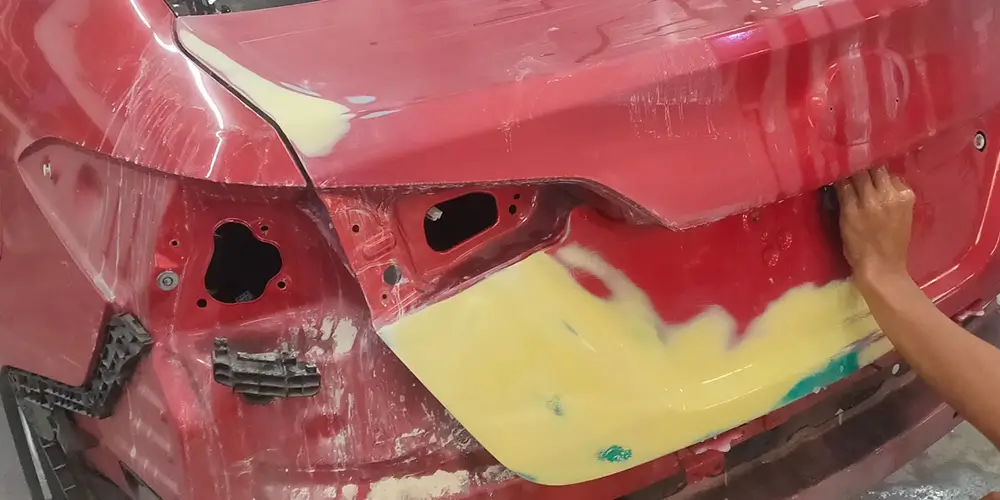
Step 1: Gather Your Tools and Materials
Before you begin, ensure you have all the necessary tools and materials on hand:
Polyester filler kit
Sandpaper of varying grits
Applicator or spreader
Masking tape
Primer
Safety equipment (gloves, safety glasses, mask)
Step 2: Prepare the Surface
Start by cleaning the damaged area thoroughly to remove dirt, grease, and debris. Use masking tape to define the repair area and prevent accidental spreading of filler.
Step 3: Mixing the Polyester Filler
Follow the manufacturer's instructions to mix the polyester filler. Typically, you'll mix a hardening agent with the filler compound. Ensure an even and thorough mix to achieve the best results.
Step 4: Apply the Filler
Using an applicator or spreader, apply the mixed filler to the damaged area. Work in thin layers, gradually building up the filler to the desired level. Feather the edges of the filler to blend it seamlessly with the surrounding surface.
Step 5: Sanding and Shaping
Once the filler is dry, use coarse-grit sandpaper to shape the repaired area. Sand in a back-and-forth motion, ensuring a smooth and even surface. As you progress, switch to finer-grit sandpaper for a polished finish.
Step 6: Primer Application
Apply a thin layer of automotive primer to the repaired area. Primer helps improve adhesion and prepares the surface for painting.
Step 7: Final Touches
Inspect the repaired area closely. If necessary, repeat the filling and sanding process to achieve the desired outcome. Once satisfied, you're ready to proceed with painting the repaired area to match the rest of the vehicle.
Tips and Best Practices:
Patience is Key: Take your time during each step of the process for the best results.
Keep It Thin: Apply thin layers of filler, building up gradually. It's easier to add more filler than to remove excess.
Feathering Technique: Feather the edges of the filler to create a smooth transition between the repair area and the original surface.
Safety First: Always wear appropriate safety gear, including gloves, safety glasses, and a mask, when working with polyester filler and other chemicals.
Conclusion:
Using polyester filler for DIY auto body repairs can be a rewarding experience, restoring your vehicle's appearance and your sense of accomplishment. By following this comprehensive guide and practicing patience and precision, you'll be well on your way to achieving professional-looking results from the comfort of your own garage. Remember, practice makes perfect, and with each repair, your skills will continue to improve, allowing you to tackle more complex auto body projects in the future.
Top Tips for Achieving a Seamless Finish with Polyester Body Filler
As the esteemed manufacturer of SYBON car polyester filler, we understand the artistry and precision required in auto body repairs. Achieving a seamless finish isn't just a goal; it's a testament to your dedication to craftsmanship. In this guide, we unveil the top tips that will elevate your repair projects from ordinary to extraordinary, showcasing SYBON's commitment to excellence.
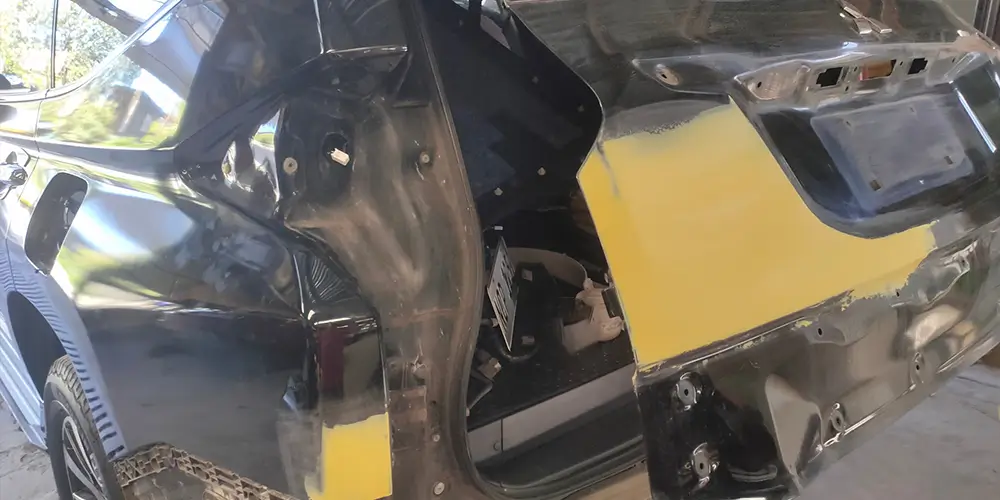
1. Preparation: The Foundation of Perfection
Before reaching for our polyester filler, ensure your canvas is immaculate. Thoroughly clean the repair area, removing dirt, grease, and rust. A pristine surface guarantees optimal adhesion and sets the stage for a flawless result.
2. Quality Matters: Choose SYBON Polyester Filler
When you choose SYBON, you're choosing quality. Our polyester filler is meticulously formulated to offer impeccable adhesion, easy application, and superior results. Opt for excellence right from the start.
3. Mixing Precision: A Key Ingredient
Follow our mixing instructions diligently. The right proportion of filler and hardener ensures uniform curing and a finish that speaks volumes about your attention to detail.
4. The Art of Layering: Thin is In
Apply filler in thin, even layers. Gradually build up the repair, allowing each layer to cure before adding the next. Thin layers are your path to seamless blending and easy shaping.
5. Feathering: Where Art Meets Skill
Master the feathering technique, creating a gradual transition from the repair area to the untouched surface. Expert feathering is the hallmark of a seamlessly integrated repair.
6. Application Excellence: Smooth and Steady
Use steady, even strokes during application. Employ an applicator or spreader to ensure the filler is distributed evenly, eliminating air pockets and achieving uniformity.
7. The Magic of Sanding: From Ordinary to Extraordinary
Sanding is your secret weapon. Begin with coarser sandpaper for shaping, progressing to finer grits for a polished surface. Embrace sanding as an art, refining your technique with every stroke.
8. Primer: Elevating Your Finish
Before painting, apply a high-quality automotive primer. Primer enhances adhesion and primes the surface for paint, taking your repair from good to exceptional.
9. Patience Yields Perfection
A seamless finish demands patience. Rushing compromises results. Immerse yourself in the process, dedicating the necessary time to each step.
10. Elevate with Experience: Your Journey to Mastery
Practice refines your skills. Begin with smaller repairs, gradually tackling more complex projects. Each endeavor is a brushstroke on your canvas of expertise.
At SYBON, we don't just provide polyester filler; we empower you to create automotive artistry. These top tips embody our commitment to your success. As you utilize SYBON's polyester filler, you're not just repairing; you're crafting a symphony of precision and excellence. Trust SYBON to be your partner in this journey to achieving a seamless finish that sets your projects apart.
Step-by-Step Guide to Applying Polyester Filler on Auto Body Panels
Welcome to the world of SYBON, where excellence in auto body repair is an art form. As a leading manufacturer of premier car polyester filler, we are committed to providing you with the ultimate guide to achieving flawless results. Whether you're an automotive enthusiast or a seasoned professional, this comprehensive step-by-step guide will walk you through the intricate process of applying SYBON polyester filler to auto body panels, ensuring a finish that surpasses expectations.
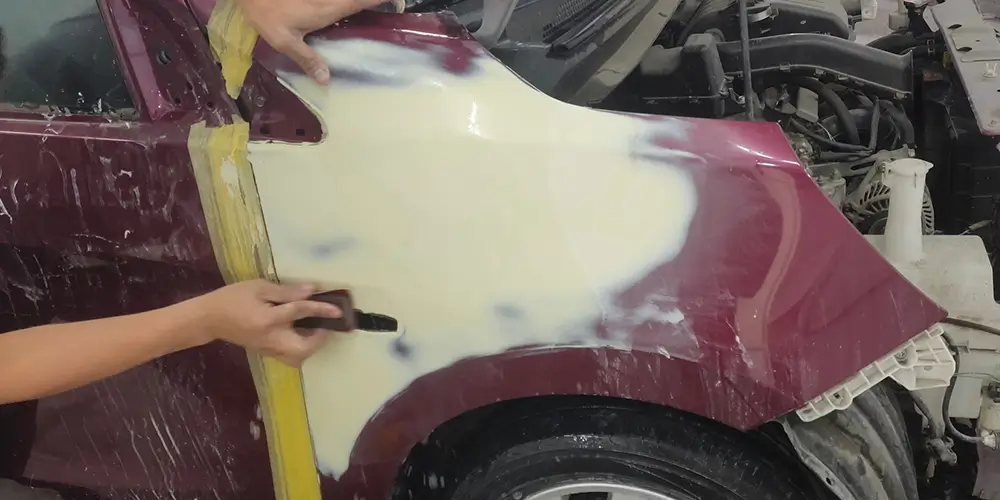
Step 1: Assemble Your Arsenal of Tools and Materials
Begin your journey by meticulously gathering the following tools and materials:
SYBON Polyester Filler
SYBON Hardener
Assorted grits of sandpaper
Precision putty knives in varying sizes or SYBON Body Filler Applicators
Clean and lint-free cloth
High-quality masking tape
Safety gear for comprehensive protection (nitrile gloves, safety glasses, a respirator mask)
Step 2: Create the Perfect Workspace
Choose a well-ventilated, adequately lit workspace – an area exclusively dedicated to your auto body masterpiece. Cover the surfaces with protective materials to prevent any unintended mishaps. Prioritize your safety by wearing the recommended protective equipment to shield yourself from potential health hazards.
Step 3: Thorough Cleaning and Initial Sanding
Begin by meticulously cleaning the repair area using a mild detergent, ensuring all dirt, grease, and contaminants are removed. Rinse with water and allow the auto body panel to dry completely. Employ coarse sandpaper to gently abrade the damaged area and the immediate surroundings, creating an optimal bonding surface.
Step 4: Achieving the Ideal SYBON Polyester Filler Mixture
Follow our precise guidelines for mixing SYBON Polyester Filler and Hardener, ensuring you maintain the correct proportions. Blend the two components thoroughly until a uniform color and texture are achieved, indicating a successful amalgamation.
Step 5: Applying with Surgical Precision
Utilize a pristine SYBON Body Filler Applicator or precision putty knife to apply a thin, even layer of the mixed filler onto the damaged area. Extend slightly beyond the dent's contours to allow for subsequent shaping and blending.
Step 6: Sculpting and Seamlessly Blending
As the filler begins to cure but retains malleability, employ a sanding block or sandpaper to meticulously sculpt the edges of the filled area. This meticulous step ensures a seamless integration between the repaired zone and the panel's existing surface.
Step 7: Gradated Sanding for Impeccable Smoothness
Embark on a journey of refinement by systematically sanding the repaired area with progressively finer grits of sandpaper. Focus intently on achieving a flawlessly smooth and consistent surface texture, with unwavering attention to seamlessly blending the filler edges.
Step 8: Scrutinize and Iterate for Ultimate Precision
Conduct an exhaustive visual examination of the repaired segment under varying lighting conditions. If the need arises, apply an additional thin layer of SYBON Polyester Filler and meticulously repeat the sanding protocol until a level of perfection that satisfies your discerning eye is achieved.
Step 9: Elevating to Unparalleled Excellence
Undertake a thorough cleaning of the repaired area to eliminate any residual dust or particles. Apply a top-tier automotive primer to the prepared surface, optimizing paint adhesion and fortifying resistance to potential corrosion.
Conclusion:
SYBON serves as your unwavering partner in your pursuit of automotive perfection. With this meticulous and detailed step-by-step guide, you are equipped to transcend boundaries and master the delicate art of auto body repair. Remember, SYBON isn't just a product – it's a testament to precision, dedication, and the relentless pursuit of unparalleled excellence.
Polyester Filler or Bondo: Decoding the Differences and Applications
In the world of automotive repairs and restorations, achieving a flawless finish is an art. As experts at SYBON, a leading manufacturer of premium car polyester fillers, we understand the importance of selecting the right products for the job. In this comprehensive guide, we will delve into the nuances of polyester filler, often referred to as Bondo, to help you decode the differences between these materials and understand their various applications.
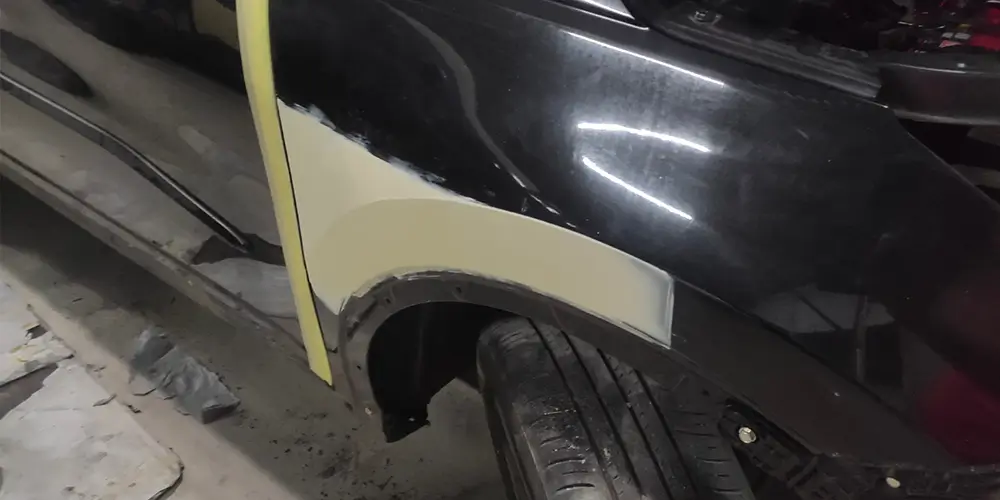
Defining Polyester Filler and Bondo:
Polyester filler and Bondo are terms often used interchangeably to describe a class of materials used in automotive body repair. Both are formulated to address imperfections on auto body panels, such as dents, scratches, and minor surface damage. While Bondo is a widely recognized brand, polyester fillers encompass a broader range of products, including those manufactured by SYBON.
Composition and Variations:
Bondo, a well-known name in the industry, is a type of polyester filler. However, it's essential to note that polyester fillers come in various formulations and brands, each with its unique characteristics. SYBON polyester fillers, for instance, are carefully engineered using advanced technologies to provide exceptional adhesion, flexibility, and ease of application.
Key Differences and Benefits:
Formulation and Consistency: Bondo and other polyester fillers may differ in their formulation, affecting attributes such as viscosity, curing time, and sanding ease. SYBON polyester fillers are designed to offer a perfect balance of viscosity, allowing for smooth spreading, shaping, and sanding.
Adhesion and Durability: SYBON polyester fillers are engineered to bond effectively with various substrates, including metal, fiberglass, and plastic. This ensures a long-lasting repair that withstands the rigors of daily use.
Flexibility and Cracking Resistance: Some polyester fillers, including SYBON's products, are formulated to provide enhanced flexibility and resistance to cracking. This is especially crucial in areas of the vehicle that experience slight flexing, preventing premature failure of the repair.
Surface Finish: SYBON polyester fillers are designed to deliver a fine, smooth surface finish that minimizes the amount of sanding required for a flawless paint application. This saves time and effort during the finishing process.
Applications:
Minor Repairs: Polyester fillers, including SYBON's offerings, are ideal for addressing minor cosmetic imperfections, such as small dents, scratches, and surface irregularities.
Panel Shaping: These fillers can also be used to reshape or contour auto body panels, restoring them to their original form.
Restorations: Whether you're restoring a classic car or enhancing the appearance of a modern vehicle, polyester fillers play a vital role in achieving a seamless, professional finish.
Conclusion:
In the realm of auto body repair, understanding the differences between polyester filler and Bondo is essential for achieving superior results. While Bondo is a well-known brand, SYBON offers a range of meticulously engineered polyester fillers that provide exceptional adhesion, flexibility, and durability. By choosing the right polyester filler for your specific needs, you can embark on a journey of automotive restoration and repair that yields unparalleled craftsmanship and lasting excellence.
Polyester Filler Innovations: Exploring the Latest Breakthroughs in Automotive Repair
In the dynamic world of automotive repair, continuous innovation is the key to enhancing efficiency, durability, and overall performance. One notable area of advancement is in polyester filler technologies, which play a crucial role in restoring and rejuvenating vehicles. This article delves into the latest breakthroughs in polyester filler innovations and their significant impact on the automotive repair industry.
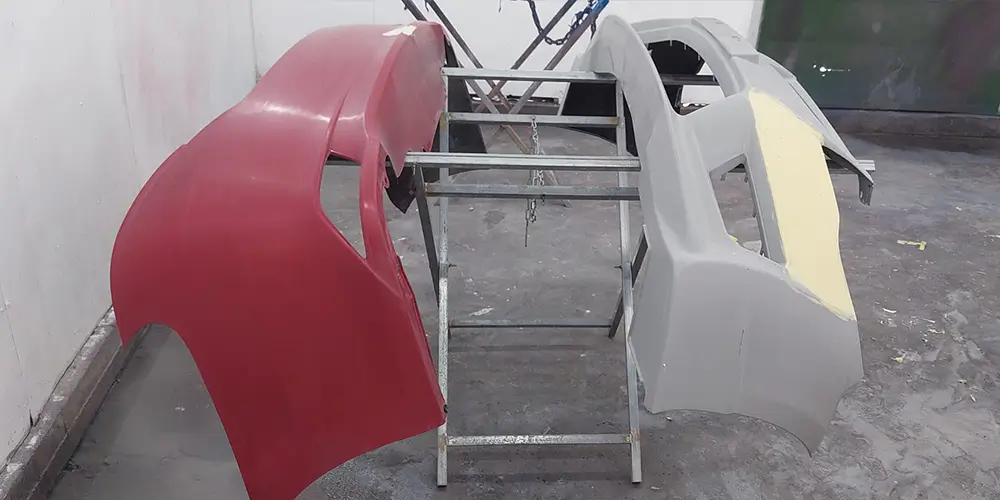
Evolution of Polyester Fillers:
Polyester fillers have been a staple in automotive repair for decades, used primarily for filling dents, cracks, and imperfections in vehicle surfaces. However, recent years have witnessed a remarkable evolution in these fillers, driven by advancements in materials science and engineering.
Enhanced Durability and Flexibility:
The latest breakthroughs in polyester fillers have focused on improving their durability and flexibility. Manufacturers are now incorporating advanced polymer blends that offer superior resistance to environmental factors such as UV radiation, temperature fluctuations, and moisture. This enhanced durability ensures that repaired areas maintain their integrity over an extended period, reducing the need for frequent touch-ups.
Feather-Edge Technology:
Feather-edging is a technique used to seamlessly blend repaired areas with the rest of the vehicle's surface. Innovations in polyester fillers have led to the development of feather-edge technologies, enabling smoother transitions between repaired and untouched areas. This breakthrough not only enhances the visual appeal of the repair work but also contributes to improved aerodynamics and reduced drag.
Faster Curing and Sanding:
Traditionally, polyester fillers required significant curing and sanding time, prolonging the repair process. Recent innovations have introduced rapid-cure formulations that drastically reduce the time needed for the filler to harden. This efficiency improvement accelerates the overall repair timeline, allowing technicians to complete more jobs in a shorter period.
Eco-Friendly Formulations:
As environmental concerns grow, the automotive industry is increasingly shifting toward sustainable practices. Polyester filler innovations have responded to this demand with the development of eco-friendly formulations. These fillers incorporate bio-based materials and reduced levels of volatile organic compounds (VOCs), minimizing their environmental impact while maintaining high performance.
Advanced Adhesion and Bonding:
The effectiveness of a polyester filler largely depends on its adhesion and bonding properties. Recent breakthroughs have resulted in fillers with enhanced bonding capabilities, ensuring a secure and long-lasting repair. This is particularly crucial for areas prone to high levels of stress and strain, such as joints and structural components.
Customizable Aesthetics:
Modern automotive enthusiasts not only seek functional repairs but also desire visually pleasing results. Polyester filler innovations now offer a range of customizable options, including various colors and textures. This allows technicians to match the filler seamlessly with the vehicle's original finish, achieving a flawless and aesthetically pleasing repair.
Conclusion:
Polyester filler innovations have come a long way from their humble beginnings, revolutionizing the field of automotive repair. With enhanced durability, flexibility, rapid curing, and a focus on sustainability, these breakthroughs are reshaping the industry's landscape. As vehicles continue to evolve, so too will the technologies that keep them on the road, making polyester fillers an indispensable tool in the modern automotive repair arsenal.
Polyester Filler vs. Epoxy Putty: Choosing the Right Material for Each Job
In the realm of automotive repair and DIY projects, selecting the appropriate materials is crucial to achieving durable and effective results. Polyester fillers and epoxy putties are two widely used options for repairing and restoring various surfaces. This article compares and contrasts these materials, helping you make an informed decision on which to use for different tasks.
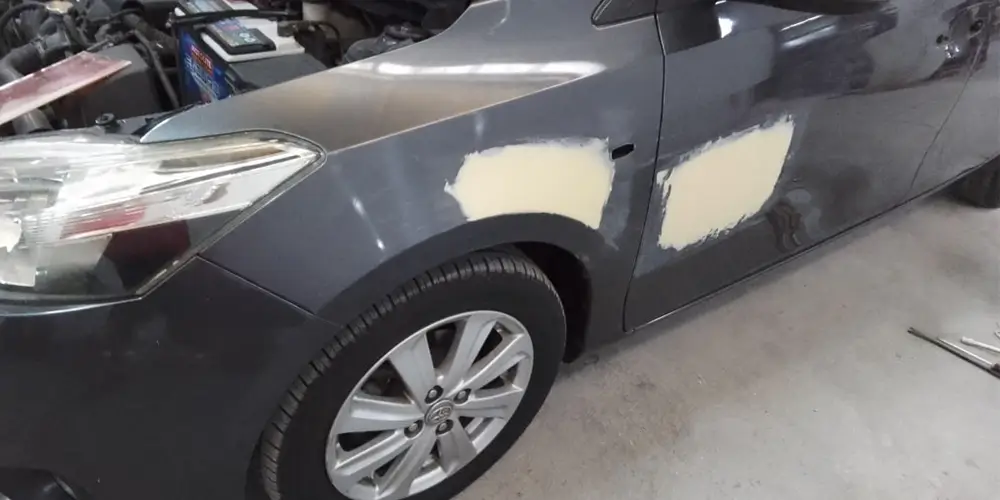
Composition and Properties:
Polyester Fillers: Polyester fillers, also known as body fillers or bondo, are composed of a mixture of polyester resin and a filler material such as talc or microspheres. They are lightweight, easy to sand, and offer good adhesion to various surfaces.
Epoxy Putty: Epoxy putties consist of two parts – a resin and a hardener – that must be mixed together before use. Once combined, epoxy putties cure to a strong and rigid finish, making them highly durable and resistant to impacts, chemicals, and temperature fluctuations.
Adhesion and Bonding:
Polyester Fillers: Polyester fillers adhere well to a variety of surfaces, including metal, plastic, and fiberglass. They are commonly used for filling minor dents, scratches, and imperfections on vehicle panels.
Epoxy Putty: Epoxy putties offer exceptional bonding strength, making them suitable for applications where a strong adhesive is required. They are often used for repairing cracks, holes, and structural damage.
Flexibility and Strength:
Polyester Fillers: While polyester fillers provide a smooth and flexible finish, they may lack the same level of strength and rigidity as epoxy putties. This makes them ideal for areas that require some degree of flexibility, such as curved surfaces.
Epoxy Putty: Epoxy putties are known for their high strength and rigidity. They are commonly used in applications where structural integrity is paramount, such as repairing load-bearing components.
Application and Ease of Use:
Polyester Fillers: Polyester fillers are relatively easy to apply and shape. They can be spread smoothly over surfaces, sanded down to a fine finish, and painted over once cured. Their user-friendly nature makes them a popular choice for both professionals and DIY enthusiasts.
Epoxy Putty: Epoxy putties require careful mixing of the resin and hardener components. Once mixed, there is a limited working time before the putty begins to harden. Precision is essential during application. While they offer superior strength, they may require more skill to apply effectively.
Versatility and Use Cases:
Polyester Fillers: Polyester fillers are versatile and well-suited for cosmetic repairs, such as smoothing out minor blemishes, scratches, and surface imperfections. They are commonly used in automotive bodywork and general DIY projects.
Epoxy Putty: Epoxy putties excel in applications that demand exceptional strength and durability. They are commonly used for repairing metal, concrete, ceramics, and even underwater surfaces, making them suitable for a wide range of industrial and household repairs.
Conclusion:
When it comes to selecting between polyester fillers and epoxy putties, the choice largely depends on the specific requirements of the task at hand. Polyester fillers are excellent for cosmetic touch-ups and minor surface repairs, while epoxy putties shine in situations that demand strength, bonding, and structural integrity. By understanding the properties and applications of these materials, you can confidently choose the right one for each job, ensuring successful and long-lasting results.
Polyester Filler Application Tools: Must-Have Equipment for Professional Results
Achieving flawless and professional results in automotive repair or DIY projects often hinges on the quality of tools used. Polyester fillers, a staple in the world of repairs, require specific application tools to ensure seamless integration and durable finishes. In this article, we explore essential polyester filler application tools that professionals rely on to deliver top-notch results.
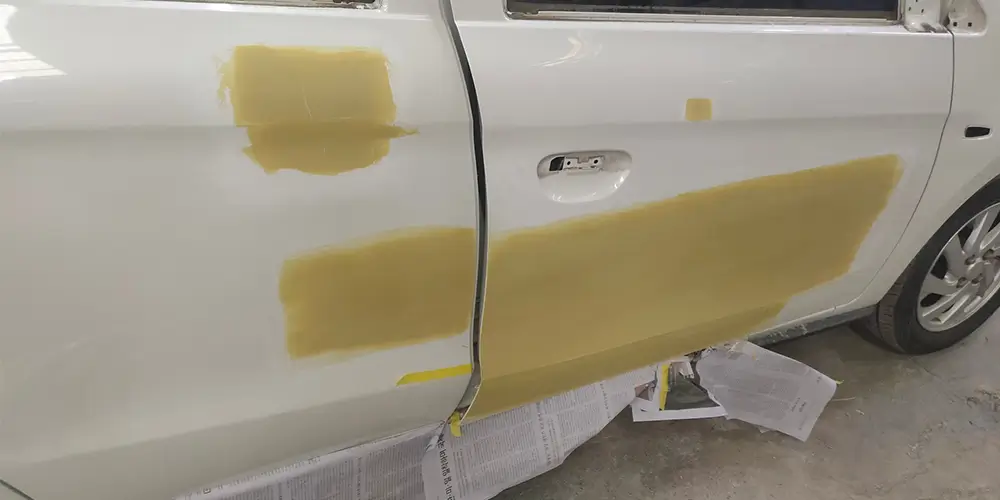
Spreaders and Applicators:
Spreaders are fundamental tools for applying polyester fillers smoothly and evenly. They come in various sizes and shapes, such as flexible plastic spreaders and metal putty knives. These tools enable technicians to apply fillers with precision, ensuring uniform coverage over damaged areas.
Mixing Boards and Paddles:
Proper mixing is critical for achieving consistent filler quality. Mixing boards provide a clean and flat surface for blending the filler components thoroughly. Mixing paddles, often made from plastic or metal, help technicians achieve a homogenous mixture that contributes to optimal adhesion and curing.
Sanding Blocks and Abrasives:
Sanding is an integral part of the polyester filler application process. Sanding blocks, along with a selection of sandpaper grits, allow professionals to smooth and shape the filler to match the contour of the surrounding surface. This step is crucial for achieving a seamless finish before painting or further refinishing.
Feather-Edge Tools:
Achieving smooth feather-edge transitions between the repaired area and the original surface is essential for a flawless finish. Feather-edge tools, designed with precision edges and curves, help blend the repaired section seamlessly, reducing the need for excessive sanding and achieving optimal aesthetics.
Applicator Guns:
For larger-scale repairs or high-volume applications, professionals often turn to applicator guns. These guns facilitate the precise and efficient dispensing of polyester fillers from cartridges, allowing for consistent application while minimizing waste.
Masking Materials:
Proper masking ensures that filler is applied only to the intended area, preventing overspray or accidental application. Masking tapes, papers, and films are indispensable tools for isolating the repair site and protecting adjacent surfaces during the application and refinishing processes.
Safety Equipment:
Polyester fillers contain chemicals that can pose health risks if proper safety measures are not taken. Personal protective equipment (PPE), such as gloves, safety goggles, and respirators, should be worn to protect against skin contact, airborne particles, and fumes.
Work Lights and Inspection Tools:
Adequate lighting is crucial for identifying imperfections and ensuring a high-quality repair. LED work lights and inspection tools help professionals detect any remaining defects or inconsistencies before proceeding to the final refinishing stages.
Conclusion:
Mastering the art of polyester filler application requires a combination of skill and the right tools. Professionals in the automotive repair and DIY industries rely on a range of essential equipment, from spreaders and mixing tools to sanding blocks and safety gear. By investing in high-quality polyester filler application tools, technicians can achieve results that meet the highest standards of craftsmanship, ensuring repaired surfaces not only look great but also maintain their integrity over time.

